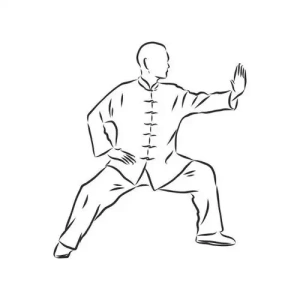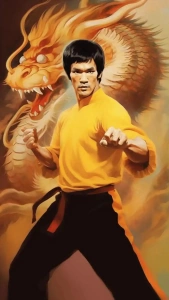
Chinese Kung Fu, also known as Chinese martial arts, traces its origins back over 4,000 years. During the Spring and Autumn Period (770–476 BCE) and the Warring States Period (475–221 BCE), martial techniques were developed primarily for battlefield combat. As dynasties rose and fell, Kung Fu evolved into a systematic discipline, with Shaolin Kung Fu emerging as a hallmark of Chinese martial arts. Today, Kung Fu symbolizes not only physical prowess but also spiritual harmony.
Kung Fu deeply integrates Confucian, Daoist, and Buddhist philosophies. Confucianism emphasizes discipline and respect, Daoism highlights balance and flow, and Buddhism teaches mindfulness and perseverance. Together, these philosophies shape Kung Fu into more than a physical practice—it becomes a way of life.
Kung Fu is traditionally categorized into internal and external styles. Internal styles, like Tai Chi and Baguazhang, focus on inner energy (qi) and meditative movements. External styles, such as Shaolin Kung Fu and Hong Quan, prioritize speed, strength, and powerful techniques.

Kung Fu training begins with foundational skills such as stances, punches, and kicks. Practitioners then progress to intricate forms (taolu), which are choreographed sequences designed to perfect technique and build strength.
Kung Fu emphasizes the unity of mind and body. Meditation, breathing techniques, and focus are integral to mastering the art, helping practitioners achieve physical control and inner peace.
Kung Fu incorporates traditional weapons, including swords, staffs, and spears. These weapons are not only tools of combat but also extensions of the practitioner’s discipline and skill.
Kung Fu performances are a highlight of traditional festivals like Chinese New Year, symbolizing strength and cultural pride.
Chinese opera incorporates martial arts to dramatize stories, while Kung Fu films, pioneered by legends like Bruce Lee and Jackie Chan, have brought Chinese culture to a global audience.
Recognized as part of China’s intangible cultural heritage, Kung Fu embodies the nation’s history, philosophy, and artistic expression.
Renowned schools like the Shaolin Temple and Wudang Mountain offer immersive training experiences. Internationally, Kung Fu academies provide accessible options for beginners.
Starting with basic stances and movements is essential. Regular practice of forms and drills builds strength, coordination, and technique.
Modern learners can access online tutorials, video courses, and virtual instructors to practice Kung Fu anywhere in the world.
Figures like Huo Yuanjia and Ip Man have left a lasting legacy in Kung Fu, inspiring countless practitioners.
Bruce Lee revolutionized martial arts with his philosophy of Jeet Kune Do, bringing Chinese Kung Fu into the global spotlight.

Kung Fu captivated Western audiences in the 1970s through Bruce Lee’s films, inspiring martial arts schools and fitness programs. Today, its techniques are incorporated into movies, fitness regimens, and self-defense training.
Kung Fu is more than a martial art—it’s a comprehensive fitness practice. From improving flexibility and strength to teaching practical self-defense, Kung Fu remains relevant in modern life.
Kung Fu refers to traditional martial arts, while Wushu is a modern, sport-oriented version emphasizing performance.
Mastery depends on dedication and practice; a lifetime may be spent perfecting this art.
Styles like Drunken Boxing and Iron Palm are challenging due to their complexity and physical demands.
Yes, many resources provide online classes, but in-person instruction is recommended for mastering techniques.
Discover rich Chinese traditions and cultural practices through festivals, customs, and history.
